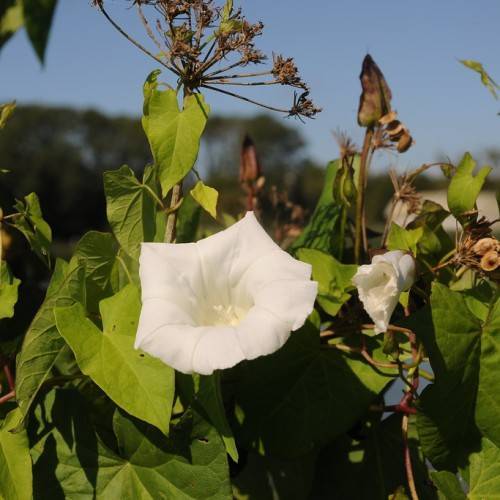
Hedge Bindweed
Calystegia sepium
Also Known As - Hedge False BindweedWatering:
Minimal
Hardiness Zone:
Sun:
full sun,part shade
Leaf:
Yes
Growth Rate:
Low
Invasive:
Yes
Care Level:
Medium
watering
Hairy False Bindweed should be watered deeply about once a week, depending on the plant's environment and stage of growth. During hot, dry weather it should be watered more frequently, ensuring that the soil remains moist but not wet. The soil should be able to dry out slightly between waterings. Overwatering can lead to root rot, so always be sure to test the soil for moisture before watering again.
sunlight
Hairy False Bindweed (Calystegia pellita) likes full sun, but can tolerate some light shade. It will grow best in areas that receive direct sunlight for 6 or more hours each day—especially in warmer climates. It is a drought-tolerant plant and can even survive short periods of drought if watered regularly. It does not need any supplemental lighting, as it will thrive as long as it receives direct sunlight for a majority of the day.
pruning
Hairy False Bindweed (Calystegia pellita) should be pruned in early spring before new growth begins. Pruning should be done by cutting stems back to 6 to 8 inches above ground level, removing any dead or dried stems. When pruning, be sure to make clean cuts so that the new growth is not damaged. The pruning process encourages new growth and can help the plant look healthier and produce more blooms. Additionally, pruning helps to keep the plant in shape as it grows. It is also important to note that pruning of Hairy False Bindweed is not necessary if the plant is growing in a natural environment, as it is not a problem-causing weed.
